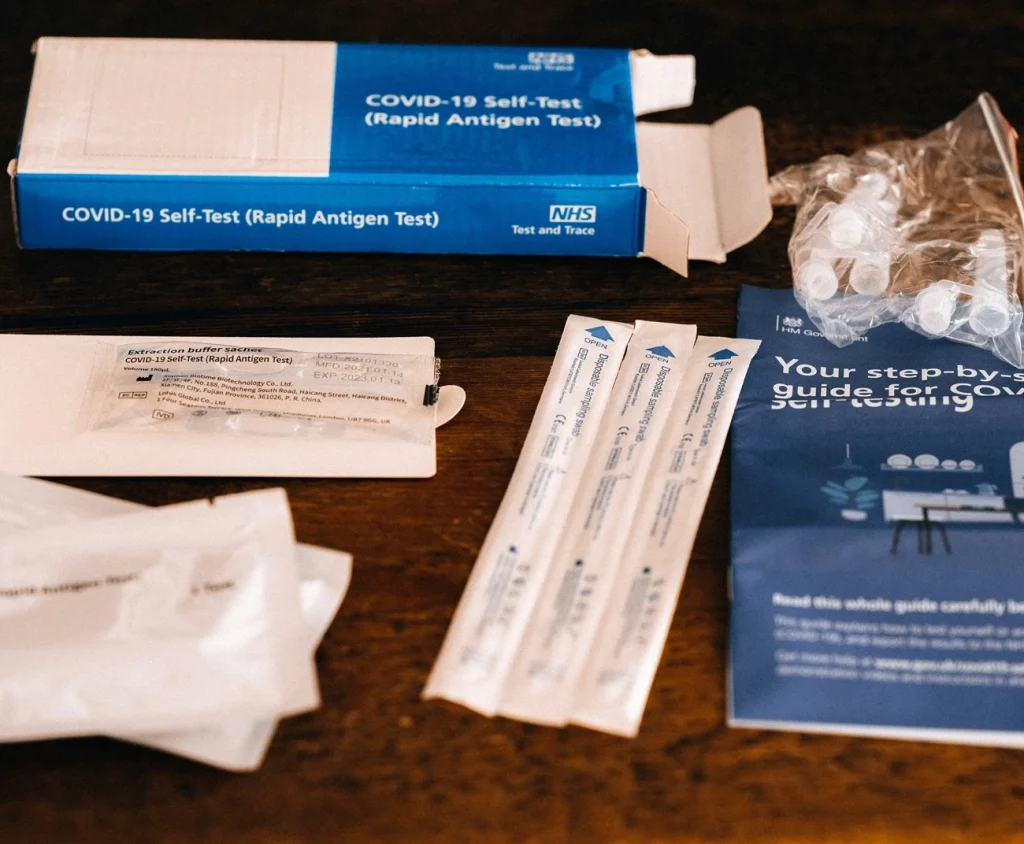Key takeaway
EMRs document care within a single facility, EHRs coordinate care across multiple facilities, and PHRs empower patients to manage their own health information. Each serves a unique and valuable purpose in the modern healthcare ecosystem.
Overview of electronic health records
Before diving into detailed comparisons, let’s explore the fundamental definitions of each type of electronic health record.
What is EMR? (Electronic medical record)
EMR (Electronic medical record) is the digital version of traditional paper charts within a single healthcare facility. An EMR contains a patient’s medical history at that specific clinic or hospital, including diagnoses, test results, prescriptions, and treatment plans.
Key Characteristics:
- Used within a single healthcare facility
- Managed by physicians and healthcare staff
- Focused on diagnosis and treatment
- Limited sharing capabilities
- Internal clinical documentation
What is EHR? (Electronic health record)
EHR (Electronic health record) is a more comprehensive system that aggregates patient health information from multiple sources. EHRs can be shared across different healthcare facilities, providers, and even countries, providing a complete view of a patient’s health journey.
Key Characteristics:
- Accessible across multiple healthcare facilities
- Tracks overall and long-term health
- Supports Health Information Exchange (HIE)
- Complies with international technical standards
- Interoperable across systems
What is PHR? (Personal health record)
PHR (Personal health record) is a system controlled and managed by the patient themselves. PHRs allow individuals to store, manage, and share their health information as they choose, putting patients at the center of their healthcare data.
Key Characteristics:
- Owned and controlled by the patient
- Can include self-reported information
- Accessible anytime, anywhere
- Integrates data from multiple sources
- Patient-driven data management
Detailed comparison: EMR vs EHR vs PHR
| Criteria | EMR | EHR | PHR |
|---|---|---|---|
| Ownership | Healthcare facility | Healthcare facility/System | Patient |
| Data scope | Single facility | Multiple facilities | Complete personal health data |
| Sharing capability | Limited | High (across facilities) | Patient-controlled |
| Data manager | Healthcare providers | Healthcare system | Patient |
| Primary purpose | Clinical documentation | Comprehensive care coordination | Personal health management |
| Interoperability | Low | High | Variable |
| Access rights | Healthcare staff only | Authorized providers | Patient + designated individuals |
| Data portability | Difficult | Moderate to high | Very high |
| Cost | Facility bears cost | System-wide investment | Often free or low-cost |
| Update frequency | Per visit | Continuous | Patient-driven |
| Typical users | Doctors, nurses, staff | Multiple healthcare organizations | Patients, caregivers, family |
| Data types | Clinical data only | Clinical + lab + imaging | Clinical + lifestyle + wellness data |
Key differences explained
Scope of use
EMR operates within the four walls of a single healthcare facility. When you visit your primary care physician, they use an EMR to document your visit, but this information typically stays within that practice. If you see a specialist at a different facility, they won’t automatically have access to your EMR.
EHR breaks down these walls. It’s designed to follow you throughout your healthcare journey, whether you’re seeing your primary doctor, visiting a specialist, or being admitted to a hospital. EHRs enable seamless information exchange across different healthcare settings.
PHR puts the power in your hands. You decide what information to include, who can access it, and how it’s used. You can add information from various sources, including fitness trackers, home monitoring devices, and even handwritten notes about symptoms.
Access and control
EMR Access: Controlled by the healthcare facility. You can request your records, but you don’t have direct access to the system. Healthcare providers within that facility can view and update your EMR as needed for treatment.
EHR Access: Controlled by healthcare providers within a network or system. Authorized clinicians across different facilities can access your EHR when needed for your care. Some EHR systems offer patient portals where you can view portions of your record.
PHR Access: You have complete control. You decide what information to enter, what to share, and with whom. This empowers you to be an active participant in your healthcare decisions.
Data sharing and interoperability
EMR: Limited sharing capabilities. Transferring information between different EMR systems typically requires printing, faxing, or manual data entry. This can lead to fragmented care and potential safety issues.
EHR: Built for interoperability. EHR systems use standards like HL7 and FHIR to enable seamless data exchange. When you visit a new provider within the network, they can access your complete health history, medications, allergies, and test results.
PHR: Flexible sharing. You can export your PHR data, share it electronically with providers, or grant temporary access to caregivers. Many PHRs can import data from EHR systems through APIs.
When to use each type
EMR is ideal for:
- Small, independent medical practices
- Single-specialty clinics
- Healthcare facilities with minimal external referrals
- Organizations with limited IT infrastructure
- Practices focusing on internal documentation and billing
Example use case: A small family practice with three physicians who rarely refer patients to outside specialists might find an EMR sufficient for their documentation needs.
EHR is ideal for:
- Large healthcare systems and hospital networks
- Organizations with multiple locations
- Integrated delivery networks
- Accountable Care Organizations (ACOs)
- Healthcare facilities prioritizing care coordination
- Organizations participating in value-based care programs
Example use case: A regional health system with multiple hospitals, specialty clinics, and urgent care centers needs an EHR to ensure all providers have access to complete patient information.
PHR is ideal for:
- Patients with chronic conditions requiring self-monitoring
- Individuals seeing multiple specialists
- Caregivers managing health for family members
- Health-conscious individuals tracking wellness data
- Patients traveling frequently
- People wanting centralized health information
Example use case: A diabetes patient who tracks blood glucose levels, monitors diet and exercise, and sees multiple specialists can use a PHR to maintain a complete picture of their health.
Benefits and limitations
EMR
| Benefits | Limitations |
|---|---|
| – Simpler to implement and maintain – Lower initial costs – Improved internal workflow efficiency – Better than paper records – Easier billing and coding – Reduced chart storage needs | – Limited data sharing – Fragmented patient care – Difficult to transfer records – No patient access – Limited population health capabilities |
EHR
| Benefits | Limitations |
|---|---|
| – Comprehensive patient view – Improved care coordination – Reduced duplicate testing – Enhanced patient safety – Better clinical decision support – Population health management – Interoperability across systems | – Higher implementation costs – Complex system requirements – Training intensive – Privacy concerns with widespread access – Potential for information overload |
PHR
| Benefits | Limitations |
|---|---|
| – Patient empowerment – Complete health data ownership – Easy to update and maintain – Portable health information – Integration with wearables and health apps – Emergency access to critical information | – Relies on patient diligence – Potential for incomplete or inaccurate data – Limited integration with provider systems – Security concerns with consumer-grade apps – Not always accepted by healthcare providers |
The future of electronic health records
The healthcare industry is moving toward greater integration and interoperability. Here are key trends shaping the future:
Convergence of systems
Modern healthcare increasingly blurs the lines between EMR, EHR, and PHR. Many EHR systems now include patient portals that function like PHRs, allowing patients to view records, schedule appointments, and communicate with providers.
API-first architecture
New regulations like the 21st Century Cures Act in the U.S. mandate that healthcare systems provide API access to patient data. This enables PHR apps to pull data directly from EHR systems, creating a more seamless experience.
Artificial intelligence integration
AI and machine learning are being integrated into all three types of systems to provide:
- Predictive analytics for disease prevention
- Clinical decision support
- Automated documentation
- Personalized health recommendations
Blockchain for security
Blockchain technology is being explored to enhance security, provide audit trails, and give patients more control over their data sharing permissions.
Wearables and IoT integration
The future will see greater integration of data from wearable devices, home monitoring equipment, and IoT health devices into all three record types, especially PHRs.
How to choose the right system
For healthcare organizations
Consider EMR if:
- You’re a small practice with limited budget
- You rarely coordinate care with external providers
- Your focus is internal clinical documentation
- You have minimal IT support
Consider EHR if:
- You’re part of a larger healthcare system
- You frequently coordinate care across facilities
- You participate in value-based care programs
- You need robust reporting and analytics
- Interoperability is a priority
For patients
Consider PHR if:
- You have chronic conditions requiring ongoing monitoring
- You see multiple healthcare providers
- You want to integrate fitness and wellness data
- You travel frequently
- You want centralized access to your health information
Popular PHR options: Microsoft HealthVault, Apple Health, MyChart, Health.gov’s Blue Button, Google Fit integration platforms
Regulatory and compliance considerations
HIPAA compliance
- EMR & EHR: Must comply with HIPAA regulations as they’re maintained by covered entities
- PHR: If provided by employers or health plans, must comply with HIPAA. Consumer-created PHRs may not be HIPAA-covered
Data security standards
- EMR & EHR: Subject to HITECH Act security requirements
- PHR: Variable security standards; patient responsibility to choose secure platforms
Interoperability mandates
- EHR systems: Must support data exchange standards
- PHR apps: Increasingly required to offer API access under new regulations
Conclusion
Understanding the differences between EMR, EHR, and PHR is crucial in today’s digital healthcare landscape. While EMRs serve individual practices, EHRs enable comprehensive care coordination across healthcare systems, and PHRs empower patients to take control of their health data.
The ideal scenario combines all three: healthcare providers using interoperable EHR systems that enable seamless care coordination, while patients maintain PHRs to track their complete health journey, including wellness data and information from various sources.
As healthcare continues to evolve toward patient-centered, value-based care, the integration and interoperability of these systems will only become more important. Whether you’re a healthcare administrator choosing a system or a patient deciding how to manage your health information, understanding these distinctions will help you make informed decisions that improve healthcare outcomes.
Access varies by system and jurisdiction. Some EHR networks have emergency access protocols. Some PHR apps allow you to create an emergency profile accessible from your phone’s lock screen.
Frequently asked questions (FAQ)
Patients have the right to request and receive copies of their EMR, but they typically don’t have direct system access. Some facilities offer patient portals connected to their EMR for limited access.
Yes, generally. EHR systems are more comprehensive and require greater infrastructure, training, and ongoing maintenance. However, they provide more value through improved care coordination and outcomes.
Security varies by platform. PHRs from reputable healthcare organizations typically have strong security. Consumer apps may have varying security levels. Always research a PHR’s security features and privacy policy before use.
Currently, direct integration is limited. However, you can often import fitness tracker data into a PHR, which may then be viewable by healthcare providers through patient portals.
Many patients benefit from both. EHR access (via patient portal) lets you view your official medical records, while a PHR lets you add personal health information, integrate wellness data, and maintain information from multiple providers.
Your records remain with the original practice. You can request copies to take to your new provider, who will then enter relevant information into their own EMR/EHR system.
Access varies by system and jurisdiction. Some EHR networks have emergency access protocols. Some PHR apps allow you to create an emergency profile accessible from your phone’s lock screen.
How useful was this post?
Click on a star to rate it!
Average rating / 5. Vote count:
No votes so far! Be the first to rate this post.




